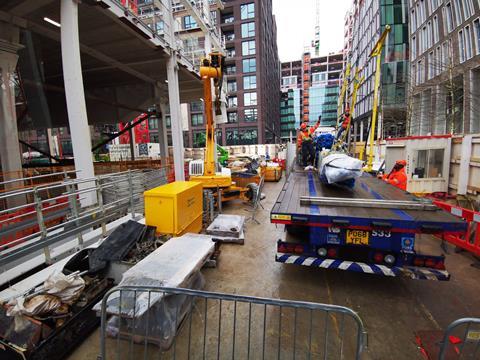But number of firms reporting lengthening materials delays slows again from summer high
Growth in housebuilding slowed slightly in the last month according to the latest data from purchasing managers.
The IHS Markit construction purchasing managers’ index for November, conducted for the Chartered Institute of Purchasing and Supply, found that housebuilding activity slipped to a figure of 54.7 in its index, where any figure above 50 represents growth.
This compares to a figure of 55.4 recorded for October for the housebuilding sector, and is also well behind the 56.5 figure recorded in the commercial sector.
The figure is the fourth month the housebuilding index has sat in the 50-60 range, indicating modest growth, compared to the period from March to July this year, where it was consistently between 60 and 70, peaking at 68.2 in June.
Despite the dip in housebuilding growth, construction activity overall grew at its fastest rate in four months in November with evidence emerging that the worst of the supply chain issues dogging the industry may have peaked.
Total activity for November stood at 55.5, up from the score of 54.6 the month before.
Less than half of those questioned reported an increase in lead times for materials, with the figure at 47%, down from 54% in October and well under the 77% peak recorded in June.

But the problems have not disappeared with just 4% reporting an in improvement in delivery times, with delays at ports and availability of HGV drivers again being cited as reasons for the time it was taking getting materials to sites – although the availability of some items, especially timber, has improved.
Around 72% of the survey panel reported an increase in purchase prices in November, while only 3% reported a decline.
Duncan Brock, group director at CIPS, said: “[The] 47% of construction firms reporting longer waiting times is the smallest number for eight months.
“Even with this glimmer of hope that the pressure on deliveries [is] easing, purchasing remained at higher level to counteract disruptions from ongoing driver shortages and port delays as supply chain managers bought more than their immediate need.”
Despite the improving situation, economists warned the Omicron variant of coivid-19 had the potential to disrupt sites in the winter months ahead.
Jan Crosby, head of infrastructure, building and construction at KPMG, said: “While so far the new variant has had little to no impact on activity, it’s difficult at this stage to see how this plays out. Another tightening of restrictions, which could see more workers needing to self-isolate, could create further delays or shut down sites altogether. It is a shame there is so much to contend with because the fundamentals in the industry remain robust.”
And Max Jones, the director of Lloyds Bank’s infrastructure and construction team, added: “While a full-scale lockdown looks unlikely, a return to the volatility felt earlier in the year when sites were depleted by quarantine requirements will strain contractors, especially smaller players with leaner workforces.”
The latest monthly figure means output has grown in each of the last 10 months with the figure in June reaching 66.3, a 24 year high, a result many are now putting down to a single month surge in pent-up demand following the easing of lockdown restrictions earlier this year.
A steeper rise in commercial construction with a score of 56.5 meant the sector overtook housebuilding as the best performing which saw its score slip to 54.7 from 55.4 the previous month. Civil engineering continued to trail but its score of 53.9 was the largest rise since August.










No comments yet